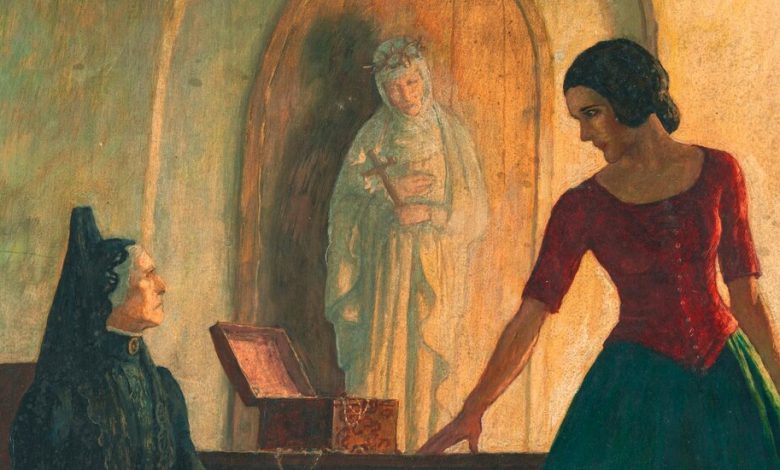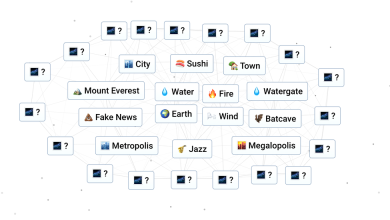Did That $4 Thrift Shop Painting Really Sell for $191,000? Nope.

To Tracy Donahue, the whole thing had felt like winning the lottery. And in a sense, she and her husband, Tom, had.
Ms. Donahue’s lucky break has been well documented: She strolled into a Savers thrift store years ago, purchased a $4 painting that struck her fancy, and then discovered it was, in fact, a rare and valuable N.C. Wyeth illustration.
When the painting sold at auction in September for $191,000, the Donahues, who live in a modest New Hampshire home and seldom have money for adventures, began mentally allocating how they would spend the windfall on bills and a trip to visit their son in Germany.
But the person who bid on the painting never paid, a decision that Ms. Donahue called her “biggest disappointment ever.”
The Donahues have since retaken possession of their painting from the auction house, Bonhams. All they have to show for their efforts is a new cardboard box, courtesy of the Bonhams shipping department.
“Luckily we didn’t spend a dime beforehand,” Ms. Donahue said. “We maybe went out to dinner once or twice, which we wouldn’t have. So, it’s not like actually losing money. But it meant so much.”
“We’re crushed,” she added. “I’ve never gotten that close to, you know, hoping for something.”
It is not clear to Ms. Donahue, 56, and Mr. Donahue, 58, exactly how their fortunes turned from that heady day when the auctioneer opened the bidding at $150,000. Someone bid immediately; no additional bids followed, and the painting was sold to paddle 6073. (The buyers premium increased the price to $191,000.)
Exactly how often buyers refuse to pay for art they have bid on is hard to quantify. But experts say that, while rare, it does happen. In one high-profile example, Alan Bond, the Australian industrialist and billionaire, struggled to pay for “Irises” — a famed van Gogh painting — after winning it at auction, and eventually sold the work to the J. Paul Getty Museum.
Auction houses prescreen potential bidders on very high-value items, but do not typically have enough people to do so for all bidders on the many items they put up each week. Some number of sales do get canceled, experts say. And although a sale may legally be considered final when the hammer falls, it is not fully consummated until the auction house receives its payment. Only in extreme cases, when it makes financial sense, do auction houses sue over a failure to pay.
In its online guide, Bonhams says potential buyers must register and provide a valid credit card or a photo identification before being approved to bid. Some winning bidders are required to upload a government-issued photo ID after an auction, before they can take possession of their purchase, the guide says.
The Donahues said they were told by the auction house that the buyer had 35 days to pay. By mid-October, they were getting worried, and started calling Bonhams. They found the auction house to be frustratingly unresponsive at first, and disconcertingly flippant when someone did finally return their calls and emails.
Ms. Donahue said she was eventually told that the buyer had declined to pay and that little could be done, in part because the buyer lived in Australia.
Bonhams did not respond to multiple requests for comment.
Since the painting did not sell, recently, Bonhams sent the Donahues a new, eight-page contract laying out the conditions for a private sale. Under this consignment agreement, the Donahues would receive no less than $132,750 for the work, assuming Bonhams could find a buyer.
The Donahues said they found the terms unsatisfactory, so they went and picked up the item.
They still have options, said Michael Plummer, a former auction house executive who advises on art transactions. They could put the Wyeth up for auction again or pursue a private sale.
The best thing to do, he said, is to try to move forward. “They shouldn’t give up,” he said.
The Donahues said they have always loved the work and its connection to Helen Hunt Jackson’s novel “Ramona.” The frontispiece illustration was part of a four-image set that Wyeth, the father of the painter Andrew Wyeth, contributed for a 1939 edition of the book. It shares its title with the book, and portrays the tension between the young protagonist and her foster mother.
The Donahues said they may decide to hand the piece down as a family heirloom. “We didn’t have the money before, we don’t have it now,” Ms. Donahue said.
But they acknowledged that they are still reeling a bit from their experience. They are unsure, they said, of exactly how to move forward or how much their thrift-store find is even really worth.
“Right now,” Ms. Donahue said, “it’s worth $4 — and a cardboard box.”





